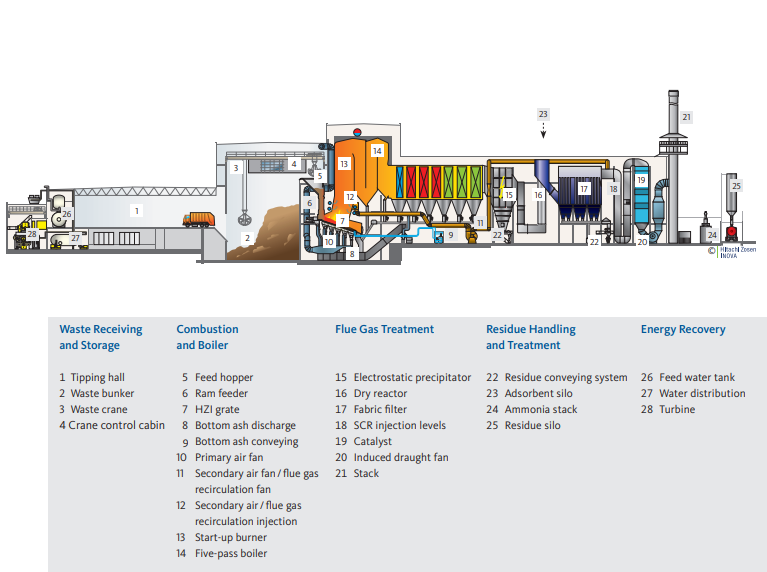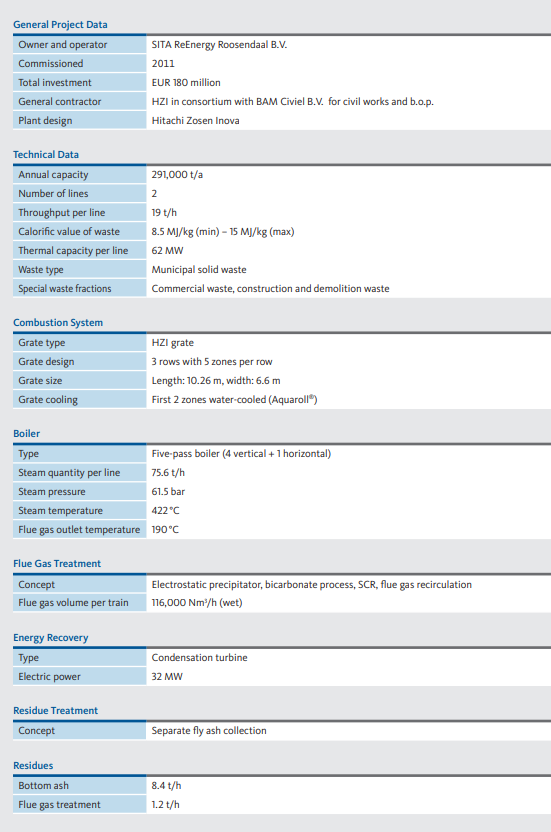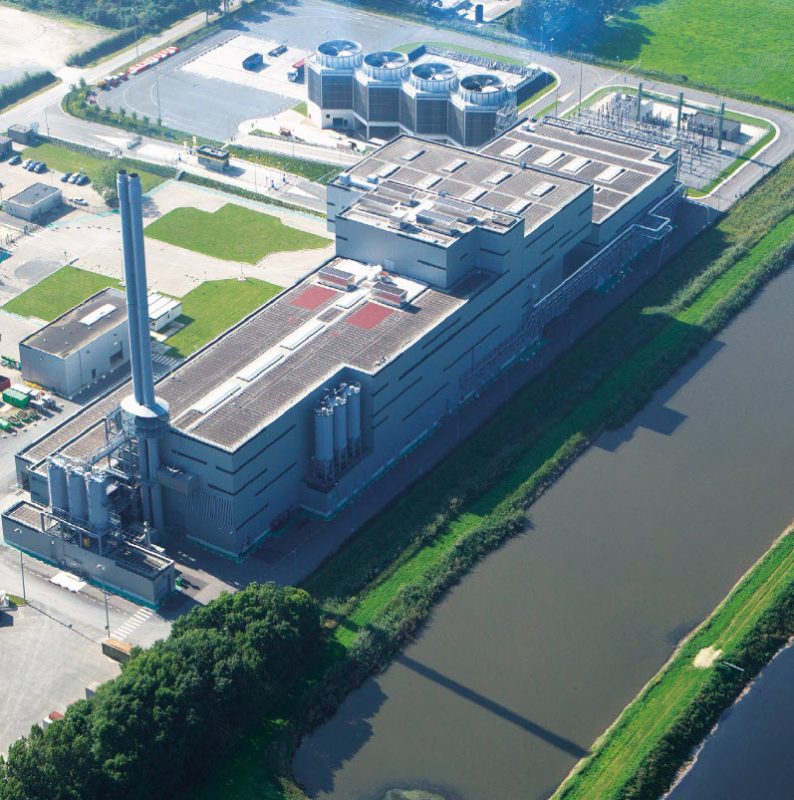Roosendaal / Netherlands
Roosendaal / Netherlands
BAVIRO– SITA ReEnergy’s WtE Plant at Roosendaal – a Commitment to Sustainable Waste Management
Located on the site of an operating facility, BAVIRO was established between May 2008 and June 2011 without interfering with the on-going operation. Layout, design and performance meet the ambitious demands of environmental protection, sustainable energy recovery and safe operability.
Project Background
In 2008, SITA ReEnergy awarded the contract to build the BAVIRO plant to meet the increasing demand for waste processing. In addition, the aim was to recover more energy, especially sustainable energy, from the waste flows. This waste power plant is designed to generate electricity and supply heat. Energy is generated from 291,000 tons of waste per year; enough for the energy supply for 70,000 households. This is in line with the approach of SITA, one of the leading companies in the waste sector in the Netherlands and internationally. Opting for this waste power plant means opting for sustainability. No less than 51% of the electricity generated qualifies as green energy. The plant delivers approximately 246,000 MWh of electricity per year, which is directly fed into the grid. Besides delivering electricity, at a later stage district heating will also be provided for a new residential area. The supply of heat to a nearby greenhouse complex is set to continue. Construction of this waste power station began in November 2008. The building consortium consisted of Kanadevia Inova AG (HZI) as consortium leader and BAM Civiel B.V. (BCI). Both have been cooperating in the erection of Waste to Energy plants (WtE) for many years.
Kanadevia Inova supplied the process designs and process installations, such as the furnaces, boilers and flue gas cleaning as well as all the electrical installations. BCI contributed the civil works and the balance of plant.
Project Execution
SITA ReEnergy owned and operated a smaller WtE plant on the construction site. On the one hand, the client’s operating experience was of value during the design and installation period. On the other hand, restrictions from the on-going operation of the existing plant in terms of spatial and temporal accessibility had to be considered. Besides the adaptation of plant design and logistics concept in order to avoid restricted areas, intense dialogues in regular meetings between all parties involved were necessary to safeguard the project’s progress and safety. The construction of the waste power plant was executed successfully in all respects: No noteworthy incidents occurred. The plant was delivered within the period stipulated and local residents barely experienced any nuisance from the construction and erection work.
Design Aspects
The BAVIRO design makes optimum use of the given and restricting boundary conditions. The two process lines are situated parallel and alongside the northern site limit. Due to the architectural concept almost all of the process equipment is located inside buildings. From west to east, the buildings’ orientation complies with the waste processing succession: tipping hall, bunker, boiler house, and flue gas treatment; while near to the western limits, the turbine hall and air-cooled condensers are placed close to each other adjacent to tipping hall and fly-over. The fly over leads to the tipping hall, which was elevated to reach the necessary dropping height without further lowering the bunker bottom plate.
Technical Set-Up
The waste is delivered by trucks to the delivery hall of the WtE plant and poured into the bunker. The bunker has a capacity of 7,000 tons, enough for five days of continuous operation. The waste is burned on a grate with five zones, the first two of which are water-cooled. During this combustion process, the volume of the waste is reduced by 90%. A fully integrated operating system ensures safe and efficient operation, low emissions and improved quality of the residue. The scrap is separated from the bottom ash, and the remaining ash is later reused for embankments and foundations. The flue gases ascending from the grate are thoroughly mixed by injecting secondary air and recirculated flue gas to ensure complete burnout of the gas. The hot combustion gases are cooled in the boiler consisting of four vertical radiation passes and one horizontal convective pass. The water from the closed water steam cycle is vaporised and super heated to 62 bar and 422 °C. The energy from the super-heated steam is transformed into electricity by a steam turbine with a generator. The exhaust steam from the turbine is condensed in an air-cooled condenser and returned to the boilers as water. Of the original energy content of the waste, approximately 28% is recovered as electricity. When the flue gases leave the boiler, the fly ash is first removed with the help of an electrostatic precipitator. Next, the flue gases are further filtered to remove harmful substances by means of a flue gas cleaning system using sodium bicarbonate and activated carbon as reagents. The particles are captured in a fabric filter. With the help of a catalyser, the nitrogen compounds are then removed from the flue gases. The cleaned gas which emerges from the 80 meter tall stack is constantly monitored. The measurements verify that the power plant safely meets the strict emissions requirements of the Dutch and European authorities.


